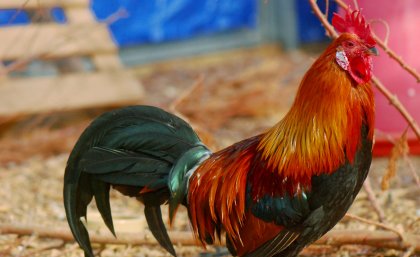
Glossy magazines and TV reality shows often portray males as the gender that strays and females as the gender that’s picky.
They are sexual stereotypes rooted in the science of UK geneticist Angus Bateman who, in 1948, published a scientific theory about sexual competition among males and females.
Bateman’s principles have often been challenged by researchers but a new University of Queensland study has shown the principles to be correct, if somewhat overestimated.
Dr Julie Collet, from UQ’s School of Biological Sciences, said the research increased understanding of the evolution of sex roles and the differences between males and females.
“In most species, males have evolved to be more competitive to increase their number of sexual partners and offspring,” she said.
“Females are usually limited by the time and energy invested in producing offspring rather than the availability of mates and can often select from a range of suitors.
“This leads to a perpetuation of the competitive traits in males and evolves into greater differences between males and females.”
Bateman’s principles suggest a direct relationship between mating success and reproductive success - the number of offspring produced - but this study shows a more complex relationship.
The researchers studied groups of red junglefowl (Gallus gallus), the wild ancestor of the domestic chicken, and recorded all mating events and offspring produced.
“Previous studies overlooked mating events that did not result in offspring,” Dr Collet said.
“When we included unfruitful mating in the equation it resulted in a weaker relationship between mating success and reproductive success.”
The results of this study were consistent with the theory of Bateman’s principles, but showed a less dramatic difference between males and females than other estimates.
“In many species, including humans, there is potentially more variability in the number of offspring per male than per female,” Dr Collet said.
“Our study supported this but showed that the level of sexual selection on males was not as high as previously estimated.”
The study also showed that Bateman’s principles could be flipped around and applied to females to show a strong relationship between reproductive success and mating success.
“Females who are more reproductively successful are more attractive to males, leading to greater mating success for these females,” Dr Collet said.
“To gain a more complete understanding of the evolution of sex roles and the differences between males and females it is necessary to rethink the traditional approaches.”
The study was published online in the Proceedings of the Royal Society B: Biological Sciences on 19 March 2014. http://rspb.royalsocietypublishing.org/content/281/1782/20132973.full
Media: Dr Julie Collet, (07) 3365 2194 or j.collet@uq.edu.au
Aimee Parker, Engagement Officer, (07) 3346 1629 or a.parker3@uq.edu.au
.jpg)









